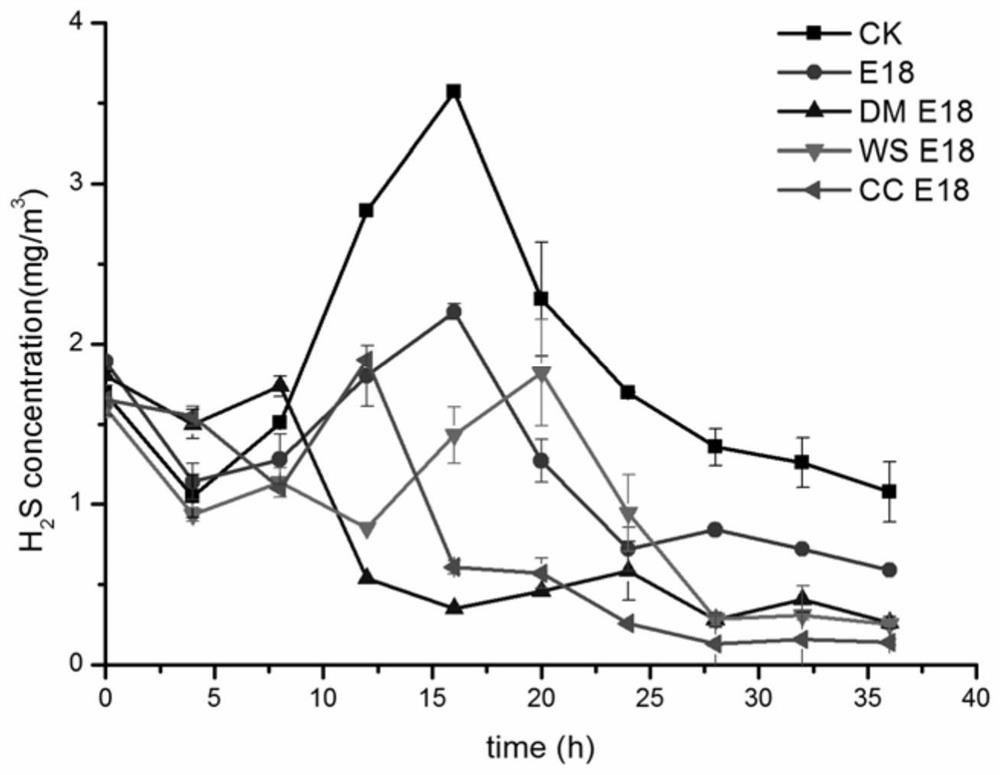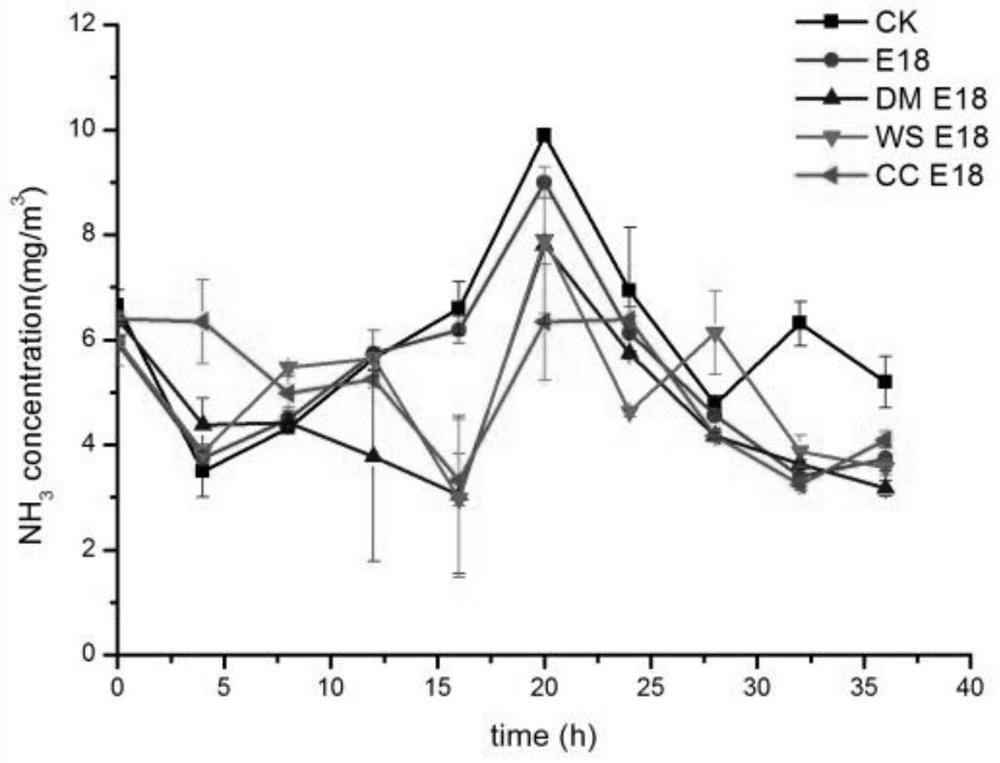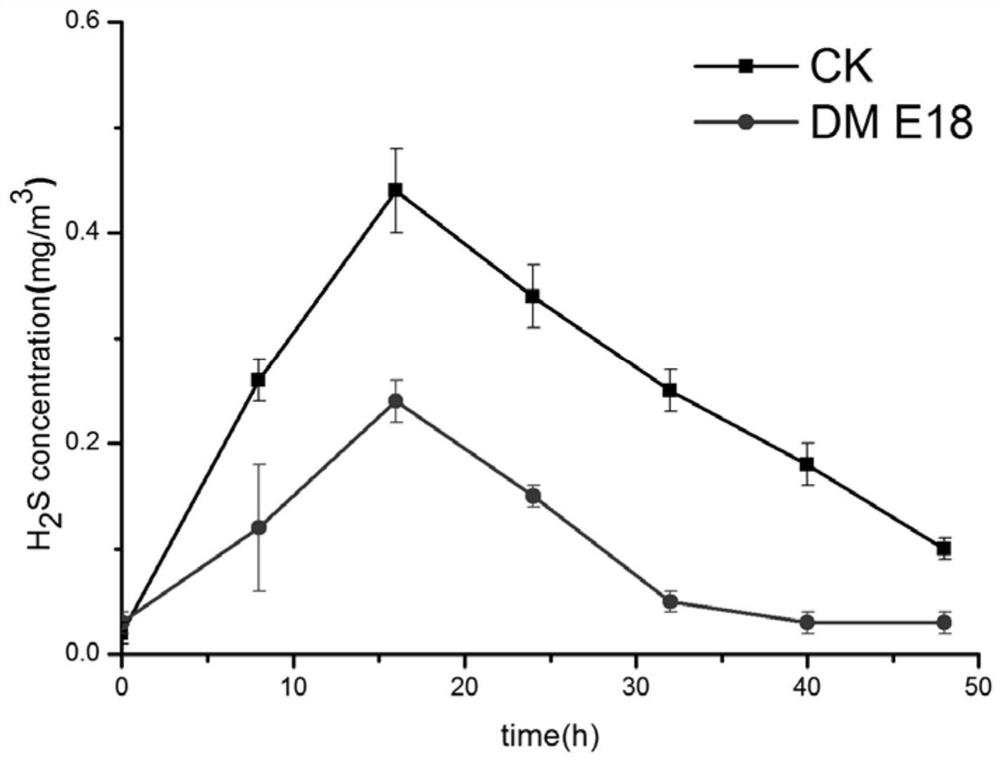Sphingomonas zeae and application thereof in biological deodorization
A sphingomonas and biological deodorization technology, applied in the biological field, can solve the problems of high equipment cost, secondary pollution and high operation requirements, and achieve the effects of high deodorization efficiency, good application potential and obvious degradation effect.
- Summary
- Abstract
- Description
- Claims
- Application Information
AI Technical Summary
Problems solved by technology
Method used
Image
Examples
Embodiment 1
[0031] Example 1 strain screening and identification
[0032] 1. Pick out bones, napkins and other substances from the kitchen waste in Yuxiu Canteen of Zhejiang University of Technology, and then use a crusher to crush the remaining waste.
[0033] 2. Take 1g of crushed food waste and dilute it to 1×10 with ultrapure water -6 , 1×10 -7 , 1×10 -8 , and take 200 μL of each dilution to solid LB medium, spread evenly with a spreader stick, place in a constant temperature incubator at 28°C for 48h to 72h, pick a single colony for streak purification;
[0034] The formula of LB medium is: yeast powder 5g, peptone 10g, sodium chloride 5g, agar 15g.
[0035] 3. After multiple rounds of purification and screening, the strains with bright yellow color, smooth shape and no wrinkles were selected, and single colonies were picked to extract the genome with the FastDNA Spin Kit for Soil kit.
[0036] 4. Use the extracted genome as a template for PCR. The PCR system is: 1 μL of template...
Embodiment 2
[0038] The preparation of embodiment 2 biological deodorizing bacteria agents
[0039] 1. Insert the Sphingomonas zea strains screened in Example 1 into the LB medium.
[0040] 2. Inoculate the activated strains into LB liquid medium for shaking culture (37°C, 180r / min) for more than 12 hours.
[0041] 3. Count the cultured bacterial solution and adjust the strain content to 10 8 ~10 9 CFU / ml.
[0042] 4. Centrifuge the bacterial solution (12000r / min, 10min), discard the supernatant after centrifugation, and collect the bacterial cells.
[0043] 5. Mix the bacteria with diatomaceous earth, wheat straw, and corncobs at a ratio of 1:1 (w / w), and then place them in a 37°C incubator until they are dry and constant weight, which are various bacterial agents. Diatomaceous earth is a molecular-grade product purchased in the market; wheat straw and corncobs are pre-treated and then mixed with bacterial agents. ℃ drying. The bacterial agents with diatomite, wheat straw and corn c...
Embodiment 3
[0048] Example 3 Carry out deodorization test with kitchen waste as substrate
[0049] The fresh kitchen waste was crushed with a blender and distributed into 500ml Erlenmeyer flasks. Each shaker bottle was filled with 100g (wet weight) of fresh food waste. Three parallel experiments were set up for each group of experiments. Then the bacterial agent prepared in Example 2 was added in an amount of 10 g / bottle, and only 100 g of fresh kitchen waste was added as a blank control. Then seal it with three layers of plastic wrap, and tie the mouth of the bottle tightly with a rubber band. Place in a constant temperature box at 28°C, and measure the concentrations of ammonia and hydrogen sulfide after 24 hours.
[0050] After three groups of parallel experiments, it was found that the degradation rate of hydrogen sulfide in kitchen waste was 87.65%, and the degradation rate of ammonia gas was 19.91% after inoculation of biological deodorizing bacteria agent for 24 hours. From the a...
PUM
 Login to View More
Login to View More Abstract
Description
Claims
Application Information
 Login to View More
Login to View More - R&D
- Intellectual Property
- Life Sciences
- Materials
- Tech Scout
- Unparalleled Data Quality
- Higher Quality Content
- 60% Fewer Hallucinations
Browse by: Latest US Patents, China's latest patents, Technical Efficacy Thesaurus, Application Domain, Technology Topic, Popular Technical Reports.
© 2025 PatSnap. All rights reserved.Legal|Privacy policy|Modern Slavery Act Transparency Statement|Sitemap|About US| Contact US: help@patsnap.com



